- Home
- Ian Buruma
Inventing Japan: 1853-1964 (Modern Library Chronicles) Page 11
Inventing Japan: 1853-1964 (Modern Library Chronicles) Read online
Page 11
How many times have I thought of suicide.
Suicide was the sacrifice demanded of all Japanese soldiers who were captured by the enemy. But it was demanded of civilians, too. By 1944, Japanese leaders knew that the war could not be won by conventional means, but diehards maintained that even if all Japanese had to die, the kokutai would survive forever. There could be no surrender. Thus an ancient privilege of the samurai caste became a national duty. When the Americans landed on Saipan, women and children were made to jump off the cliffs. Up to 170,000 civilians died in Okinawa. Thousands were driven into American machine-gun fire as cover for Japanese troops. Others were forced to make room in hiding places for soldiers by killing themselves and their families with razors, knives, or, if necessary, their bare hands. Hundreds of thousands more perished in the man-made firestorms of Tokyo, Osaka, or Fukuoka, and still Japan’s Götterdämmerung was being blamed by the ruling elite on the insufficient spirit and loyalty of ordinary citizens.
Schoolchildren were ordered to write letters to Japanese soldiers at the front, telling them to “die gloriously.” In 1945, military suicide tactics actually became national policy. The Divine Wind Special Attack Units were the brainchild of Admiral Onishi Takijiro, who committed suicide himself after Japan’s defeat. Young men, often from the best universities, were pressured into volunteering for this last show of Japanese spirit. Submarines and fighter planes were constructed especially for the suicide missions. In fact, even though only one in three suicide fighters actually hit an American target, the tactic was damaging to U.S. ships and cost many lives. But even Admiral Onishi cannot have seriously thought it would win the war. He may have hoped that such tactics would, in the words of one elder statesman, develop a more “advantageous war situation,” forcing the enemy to come to terms. The desired effect was certainly deadly, but it was also theatrical: A peculiar idea of Japaneseness, whose seeds were sown in the late Edo period but which became a national pathology in the late 1930s, had turned from outward aggression to pure self-destruction.
There was really just one man who could have put an earlier end to all this misery, and that was the emperor himself. Any decision by his war cabinet had to be unanimous; otherwise the government would fall. And on the all-important matter of ending the war, Hirohito’s ministers were far from unanimous. In May 1945, Truman reiterated the Allied position that Japan surrender without conditions, after which the Allies would replace the militarist regime with a democratic government. Much against the wishes of Japan experts in the State Department, including the former ambassador to Tokyo, Joseph Grew, no promise was made to protect the imperial throne. Since the throne was the holiest shrine of the kokutai, the emperor was no more keen to accept an unconditional surrender than were his generals.
In June 1945, the imperial palace in Tokyo was hit by a bomb. Perhaps it was this that helped to concentrate the emperor’s mind, or perhaps it was worrying reports that his subjects were beginning to get restless. The emperor had been startled by the lack of reverence—indeed, the air of almost hostile indifference—of the bombed-out people when he was whisked through the blackened ruins of central Tokyo. By this time the capital, as well as almost every other major city in Japan, was reduced to heaps of rubble. There was no sign of a civilian rebellion as yet, but the possibility could not be dismissed. Prince Konoe, the former prime minister, warned darkly of a communist revolution that would be an even greater threat to the kokutai than an Allied victory.
So the emperor decided to sue for peace without endangering his own divine right to rule. Overtures were made to Stalin, to see whether the Soviets could broker a peace. But Japanese offers were too vague and had come too late. The Soviets were not interested. Even as envoys went back and forth to Moscow, preparations were made for a fight to the end. What was left of the Japanese military industry cranked up production of human torpedoes, suicide planes, human rocket bombs, and special “crash boats” for a final clash to the death with the invaders.
At the Potsdam Conference in July, Truman told Stalin about his “new weapon of unusual destructive force.” Stalin already knew this from his spies, so he smiled his crocodile smile and wished the Americans good luck with it. The Potsdam Proclamation, issued by Truman, Churchill, and Chiang Kai-shek, demanded an unconditional surrender. Still, no guarantees were given about the preservation of the throne, but the Allies promised to install a government “in accordance with the freely expressed will of the Japanese people.” Some Japanese, such as Foreign Minister Togo Shigenori, realized this was the best Japan could hope for. To have insisted on accepting Allied terms, however, could have landed him and his like-minded colleagues in jail as “defeatists.” The military supreme command was still adamant to persevere to the end. Prime Minister Suzuki Kantaro, a retired admiral, did what Japanese leaders had done so often before: He let things drift. The Potsdam Proclamation was ignored, Japanese preparations for a final battle continued, and on August 6 Truman unleashed his special weapon on the city of Hiroshima. In a flash, one hundred thousand, or possibly more, men, women, and children died. Two days later, Soviet troops invaded Manchukuo. Three days after the bombing of Hiroshima, Nagasaki was pulverized, too.
That night, after the news of the Nagasaki bombing had struck home, the emperor convened a meeting inside a stifling underground bunker with his Supreme War Leadership Council. The six members of the council sweated in their dress uniforms, while the emperor, sitting stiffly in front of a gilded screen, listened to their arguments. If consensus could not be reached on how to proceed, the government would fall and many more people would die. What followed was the grotesque culmination of a politics based on mystical dogma. All members agreed on one thing, the preservation of the kokutai. There was no agreement, however, on the meaning of that elusive thing. Foreign Minister Togo saw the imperial institution in terms of a secular, constitutional monarchy, an organ of state, as defined by the eminent Taisho-era jurist Minobe Tatsukichi. But his army and navy colleagues regarded the emperor’s prerogatives in a divine light. His right to rule could not be compromised. Furthermore, the army minister would not accept an Allied occupation of Japan, let alone a war crimes tribunal.
So it had come down to this. Now that Japan faced total destruction after half a century of wars, it was down to a fundamental question about the definition of the Japanese polity. Millions of American, Chinese, European, Southeast Asian, and Japanese lives hinged on it. Admiral Suzuki, a vague Japanese consensus seeker of the old school, turned to the emperor to decide. The emperor still fretted about the sacred mystique of his office. If the enemy were to land near Ise Bay, they would be able to take over two of the most important Shinto shrines, where the sacred imperial regalia were kept. Under these circumstances, he later remembered thinking, protection of the kokutai would be difficult. He made the “sacred judgment” that Allied terms should be accepted.
On August 15, millions of Japanese, many of them sobbing on their knees, heard the emperor’s voice for the first time, on the radio. Many could barely understand his formal court language. The contents of his surrender speech were couched in terms similar to those of the Great East Asia propaganda. It was not just to stop further use of “a new and most cruel bomb” that he had decided Japan should surrender, but “to pave the way for a grand peace for all generations to come by enduring the unendurable and suffering what is insufferable.”
The emperor left much unsaid. He did not mention the threat of a Soviet invasion or his anxieties about a rebellion among his own people. Like the war itself, its ending was seen by many Japanese as divine providence. But such providence too can be manipulated. Admiral Yonai, a member of the Supreme War Leadership Council, gave a candid account on August 12, 1945: “I think the term is perhaps inappropriate, but the atomic bombs and the Soviet entry into the war are, in a sense, gifts from the gods. This way we don’t have to say that we quit the war because of domestic circumstances.”
Japan was in ruins. Domestic circums
tances would never be the same again. Together with millions of lives buried under the wreckage of war, a particular idea of Japan, both modern and archaic, Western and nativist, destructive of others and of the Japanese themselves, lay buried, too, one hoped forever. Yet there would be times in subsequent years when it still stirred—the last spasms of death, or the lingering signs of a longer-lasting life? Perhaps it is still too early to tell.
* From Masao Maruyama’s Thought and Behaviour in Modern Japanese Politics, edited by Ivan Morris (Oxford: Oxford University Press, 1969).
6
TOKYO BOOGIE-WOOGIE
General Douglas MacArthur arrived at Atsugi naval airdrome, near Yokohama, on August 30, 1945. Having emerged from his aircraft, the supreme commander for the Allied powers (SCAP) paused at the top of the steps, stuck one hand in his hip pocket, tightened his jaws around his corncob pipe, and surveyed the conquered land through his aviator sunglasses. This trademark pose, casually imperious, had been well rehearsed. It was repeated several times from different angles, so all the press photographers could get a decent shot.
We cannot know exactly what went through SCAP’s mind at that moment, but reports of his monologues on the long flight from Australia suggest that he felt like a man with a mission. MacArthur was no expert on Japan; in fact, he knew very little about the place. But guided, in his own account, by George Washington, Abraham Lincoln, and Jesus Christ, he would deliver this benighted Oriental nation from slavery and feudalism and transform its people into pacific democrats. It was to be the most radical overhaul since the Meiji Restoration, another new dawn to the West. But this time America, and not Germany, would be the model, the only model. Officially, the occupation of Japan was to be shared by the other Allied powers, including the Soviet Union. In fact, it was an American show from the start.
SCAP’s mission began almost one hundred years after Commodore Perry arrived with his black ships. Then, too, “the universal Yankee nation” had come (in Perry’s mind, at any rate) to bring light to Japanese darkness. The guns on the deck of his flagship, Powhatan, made sure the Japanese got the message. This earlier mission was not forgotten at the hour of Japan’s official surrender. Perry’s flag, carefully preserved at the Naval Academy in Annapolis, was flown to Japan for the ceremony on the battleship Missouri. After the old flag was hoisted and MacArthur spoke grandiloquently, like the ham actor he was, of freedom, tolerance, and justice, fifteen hundred U.S. Navy fighter planes and four hundred B-29 bombers roared overhead in tight formation.
The Imperial Japanese Army and Navy were disbanded. Leftover stockpiles and matériel were either destroyed or disappeared into the black markets, thus setting up the careers of well-connected Japanese gangsters, political fixers, and right-wing politicians. Destroying Japan’s military was only the beginning, however. Political institutions had to be reformed and the zaibatsu tackled. The Japanese bureaucracy, on the other hand, was left largely in place to carry out SCAP’s reforms for him. Unlike Germany, Japan was to be administered by the Japanese themselves, with SCAP and his staff as puppet masters, frequently moving in the dark. There was a general election in 1946, and occupied Japan continued to be run officially by Japanese governments under the autocratic gaze of SCAP. Thus, an important link between prewar, wartime, and postwar Japan was preserved. The effect was not all to the good.
But SCAP’s mission was to be something more profound and grandiose than political reform. Japanese culture itself, the entire cluster of Japanese mentalities grown over thousands of years like noxious weeds, had to be overhauled, cleansed, and remade. SCAP was advised in these matters by some conservative members of his entourage who prided themselves on their knowledge of “the Japanese mind.” These were, by and large, conservative men who regarded the Japanese as childlike people, prone to savagery if they were not taken firmly in hand. MacArthur, though not all his advisers, took seriously his duty to impose democracy, but this would involve much more than politics. He saw himself as a reformer of the Japanese soul.
MacArthur’s remark in 1951, that in terms of modern civilization the Japanese were like a twelve-year-old boy, was typical of his thinking. The context of this remark, made to a joint committee in the U.S. Senate, is worth repeating. MacArthur was comparing Japan to Germany. The Germans, he said, were a “mature race.” The Japanese were still in “a very tuitionary condition.” Science, culture, and religion were as highly developed in Germany as in other Western nations. The Nazi poison could be drained from German society without changing German culture, which had after all produced Luther, Beethoven, and Goethe. The Nazi regime had been a perversion of German culture; its leaders had acted brutally in a deliberate attempt to dominate the world. The Germans did not have to be tutored in the ways of another civilization. (MacArthur did not mean this as a compliment; in his view the Germans were all the more despicable because they should have known better.) The Japanese, on the other hand, had behaved like the children they were. They had, in MacArthur’s version of events, “stumbled” into militarism because they didn’t know any better. This also implied that the Japanese, in their immature state, were still flexible enough to improve under firm and fair guidance.
In the 1850s, Commodore Perry had also done some thinking about the Japanese mind and made the following report to his superiors in the Navy Department: “I was well aware that the more exclusive I should make myself and the more exacting I might be, the more respect these people of forms and ceremonies would be disposed to award me, hence my object, and the sequel will show the correctness of these conclusions.” SCAP took exactly the same view, and from the moment he emerged from his plane at Atsugi airdrome to the moment he left in 1951, he hardly saw any Japanese apart from the emperor and other dignitaries in highly formal settings. Aloof and grand to the point of absurdity, SCAP made speeches at them and delivered decrees, but he remained as remote as Japanese rulers traditionally had been from their subjects. The great democratic teacher was as unassailable as the emperor himself.
The parallel was not lost on the Japanese, but they had to be discreet about it. In 1946, a vaudeville performer in Tokyo sang a song that contained the lines “Everybody is talking about democracy. But how can we have a democracy with two emperors?” SCAP’s officials were tipped off, and the song was banned. At the Kabuki theater in Tokyo, a particularly fine performance of one of the star actors elicited admiring cries from the audience. “The best in Edo [Tokyo]!” shouted one. “The best in Japan!” yelled another. “General MacArthur!” bellowed a third, after which there was silence, for no one could think of anything more exalted. There was the other emperor, of course, but to shout his name in the theater would have been highly inappropriate, and besides, Japanese knew that SCAP was the ruler now, not Hirohito, who was under the general’s protection. For the emperor, too, was a pupil of the Americans, groomed to be the symbol of Japan’s transformation. To some, his continued occupation of the imperial throne was a sign of American wisdom; it showed SCAP’s shrewd understanding of the Japanese mind. To others, including many Japanese liberals, for whom Japan’s wartime defeat meant their own liberation, it was seen as SCAP’s most damaging failure.
—
The key word in the early years of the occupation for everything that was wrong with Japanese culture was “feudalism.” The Kabuki theater, it was believed, was infested with feudalism. The No, austere and aristocratic, and the popular Bunraku puppet theater were, for some reason, judged less harshly. Kabuki plays featuring loyal samurai or scenes of suicide were temporarily banned or heavily censored. So was the Kojiki, an eighth-century compilation of myths, some of them extolling the virtues of ancient emperors. Mount Fuji, a sacred spot in Shinto worship, was also marked as a noxious symbol of feudalism. Shots of the famous mountain were cut from Japanese films. Samurai movies were, of course, banned outright.
Teachers who had told a generation of children that the Japanese imperial house was divine and that to die for the emperor was glorious were
now instructed to repudiate all that and teach the virtues of demokurashii instead. Since it was impossible to print new textbooks immediately, offending passages in the old books had to be obscured with black ink. Pictures of Japanese battleships and other military hardware were blotted out in similar fashion.
Demokurashii was to be instilled in the Japanese people as though none of them had heard of the concept before. This involved, among other things, the “three S’s”: sex, screen, and sport. Baseball was encouraged as an intrinsically democratic game. American tutors were concerned about the feudalistic relations between Japanese men and women, who never held hands, let alone kissed in public. Kissing scenes in prewar Hollywood movies had been censored in Japan. So the occupation authorities decreed that henceforth there should be kissing in Japanese films. The first movie to take the plunge was entitled 20-Year-Old Youth and created a sensation. One zealous occupation officer had the smart idea that square dancing would be an ideal way to liberate Japanese from feudalism and introduced this novelty to some rural folks.
There was a great deal of idealism, as well as naïveté, in the American attempt to bring democracy to Japan. As always, idealism breeds hypocrisy. For even as the Japanese were lectured on their right to free speech, criticism of occupation policies was banned. Satirical cartoons of SCAP were forbidden. And SCAP officials were so keen to present the United States and its citizens as models of virtue and probity that unfavorable views were censored. The Grapes of Wrath, John Steinbeck’s novel about American poverty, was banned, as were books and films about the bombings of Hiroshima and Nagasaki. Much as kissing, hand-holding, and dancing were to be encouraged among the Japanese, photographs of GIs fraternizing with local girls were out of bounds. However, since the right to free speech was part of the American way, mention of occupation censorship was also strictly forbidden.

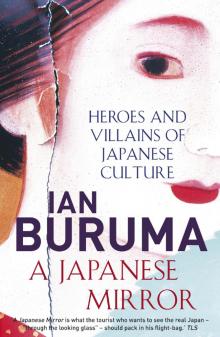 A Japanese Mirror
A Japanese Mirror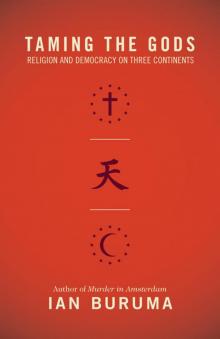 Taming the Gods
Taming the Gods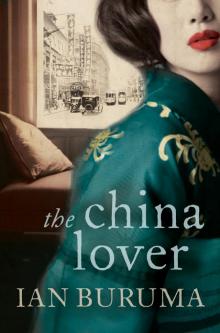 The China Lover
The China Lover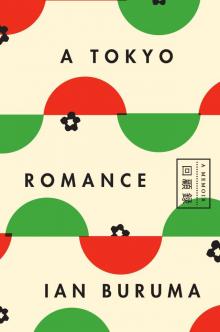 A Tokyo Romance
A Tokyo Romance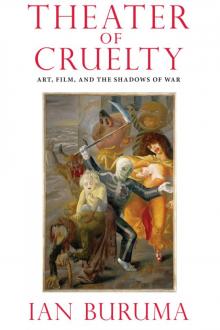 Theater of Cruelty
Theater of Cruelty Year Zero
Year Zero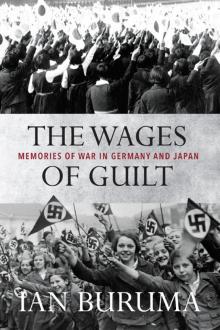 The Wages of Guilt
The Wages of Guilt Murder in Amsterdam
Murder in Amsterdam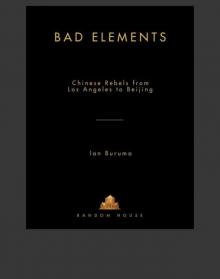 Bad Elements
Bad Elements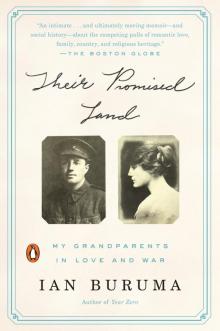 Their Promised Land
Their Promised Land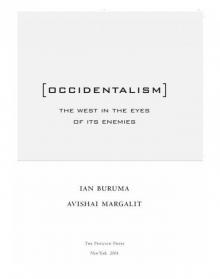 Occidentalism
Occidentalism Anglomania
Anglomania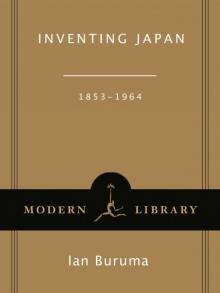 Inventing Japan: 1853-1964 (Modern Library Chronicles)
Inventing Japan: 1853-1964 (Modern Library Chronicles) The Missionary and the Libertine
The Missionary and the Libertine